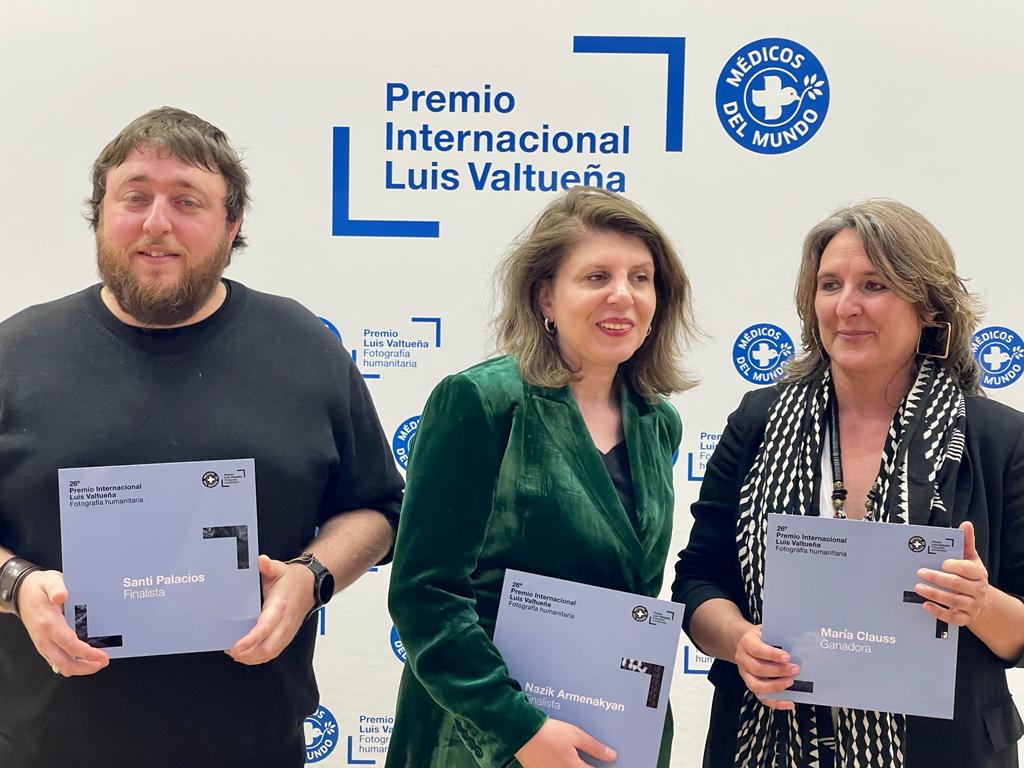Photography is a fundamental tool for raising awareness and bearing witness to human rights violations in all corners of the world, from Ukraine and Armenia to Central America and Spain. This is the challenge that the organisation Médicos del Mundo sets itself every year with its Luis Valtueña International Humanitarian Photography Prize, which this year celebrates its twenty-sixth anniversary with a markedly feminine character.
More than seven thousand images from ninety-four countries were submitted for the prize, which recognised the Spaniard María Clauss for her work Donde no habite el olvido (Where Oblivion Does Not Dwell), in which she uses photography as a “medium” to recover memory. In this way, the author aims to make visible the spaces of repression, the people who were repressed and their direct relatives after the beginning of the Spanish civil war in the Andalusian province of Huelva.
From a national to an international perspective
The exhibition, which can be visited free of charge, travels from the national to the international. Thus, the Spanish photographer Santi Palacios has emerged as a finalist with his work The Massacre of Bucha, in which he portrays the Dantesque scenes that the population found after the departure of the Russian troops from this Ukrainian city, which has become a symbol of the violations of human rights in that armed conflict.
“Bucha is relevant not only because the war in Ukraine continues, but also because what happened in that town must not be forgotten”, says the photojournalist.
The prize has also travelled to Armenia by recognising as a finalist the artist Nazik Armenkyan, who with her lens masterfully focuses on an invisible reality: that of the women in her country with HIV, infected by their husbands and doubly victimised, as due to tradition or religion they cannot talk about what they are experiencing.
These women face an extremely hard situation when they learn that they are infected with HIV. “Many of them have suicidal thoughts or even attempt suicide. It is a difficult situation for all young Armenian women”, says Armenakyan, author of Red, Black, White.
In addition, Colombian Federico Ríos was recognised as a finalist in this edition for his work Migrantes atravesando el Tapón del Darién (Migrants crossing the Darién Gap). This passage through a steep jungle between South and Central America is crossed every year by thousands of people who suffer all kinds of calamities on their way to reach the American dream.
“The most painful thing is how the world has decided to look the other way and ignore migration, which is not a matter of small numbers”, emphasises the photojournalist.
Finally, this competition, with a markedly feminine character, awarded a special mention to the Mexican Sáshenka Gutiérrez Valerio for her series Jódete cáncer, in which she makes visible through Sandra, a survivor of a double mastectomy, the scars of this disease, while at the same time questioning the current standards of beauty.
The Luis Valtueña Award
Since 1997, Médicos del Mundo Spain has organised the Luis Valtueña International Humanitarian Photography Award to recognise the work of photojournalists whose work bears witness to and denounces the realities of communities in vulnerable situations.
The award is named after the aid workers Flors Sirera, Manuel Madrazo, Mercedes Navarro and Luis Valtueña, who were killed while carrying out humanitarian work in countries in armed conflict.


